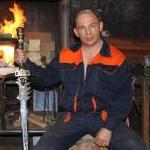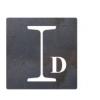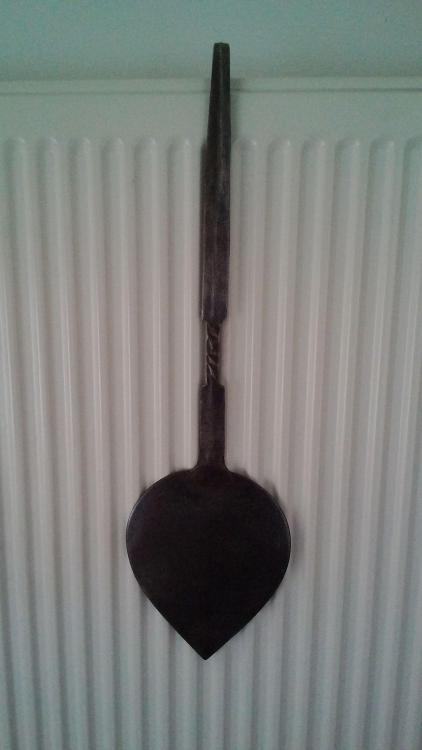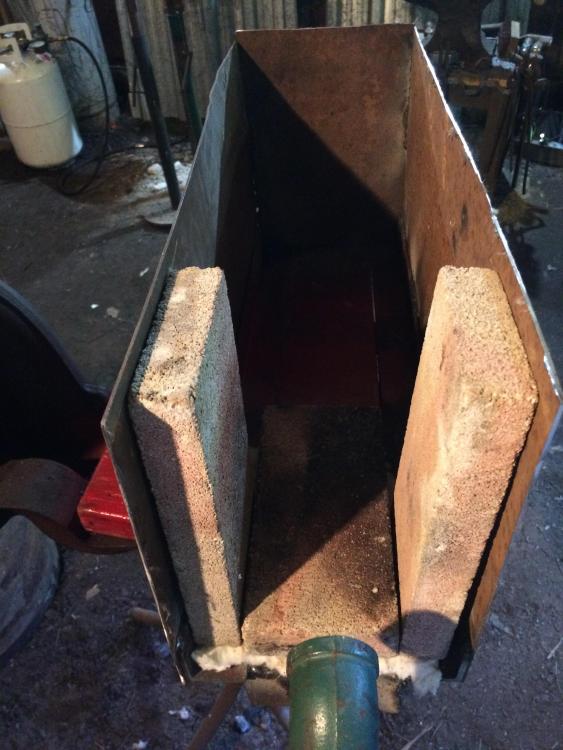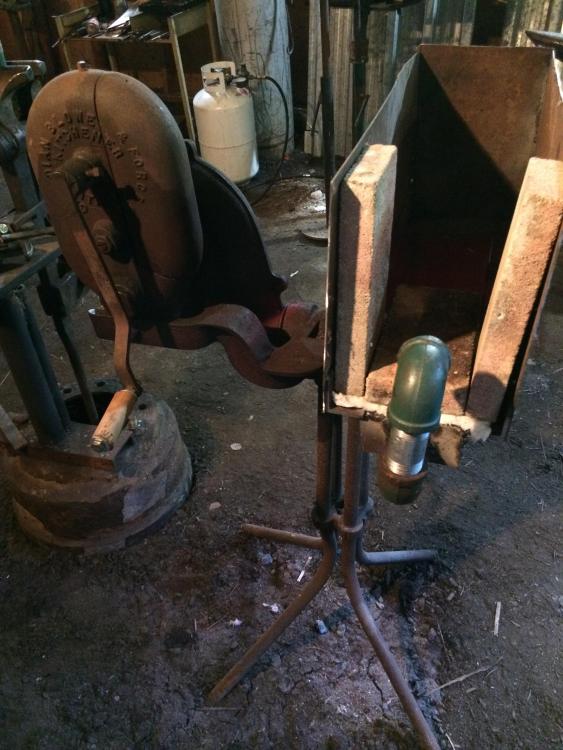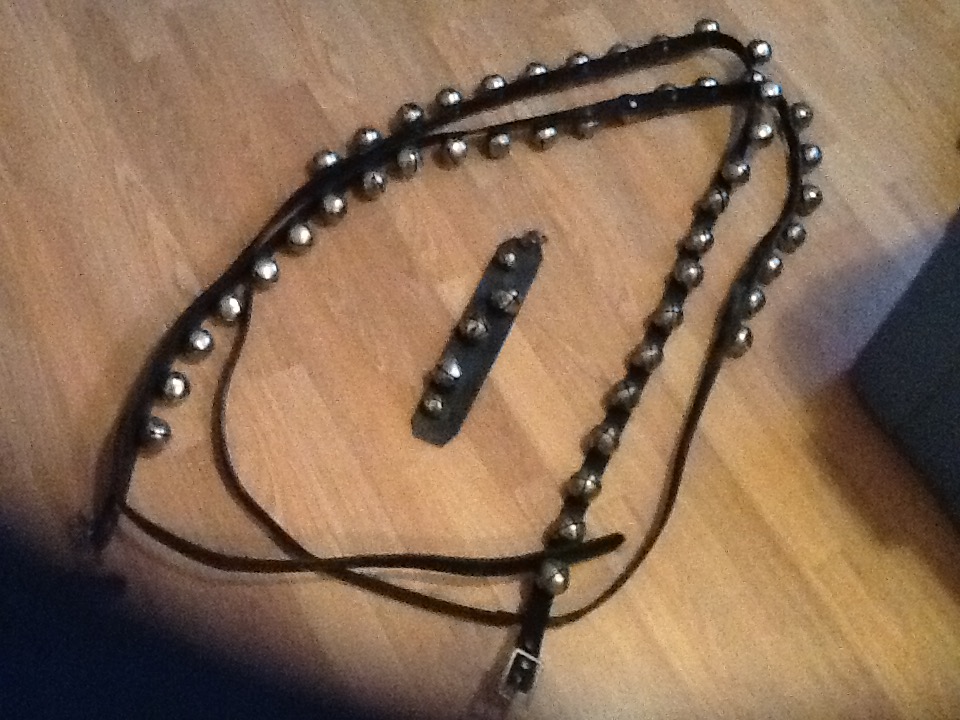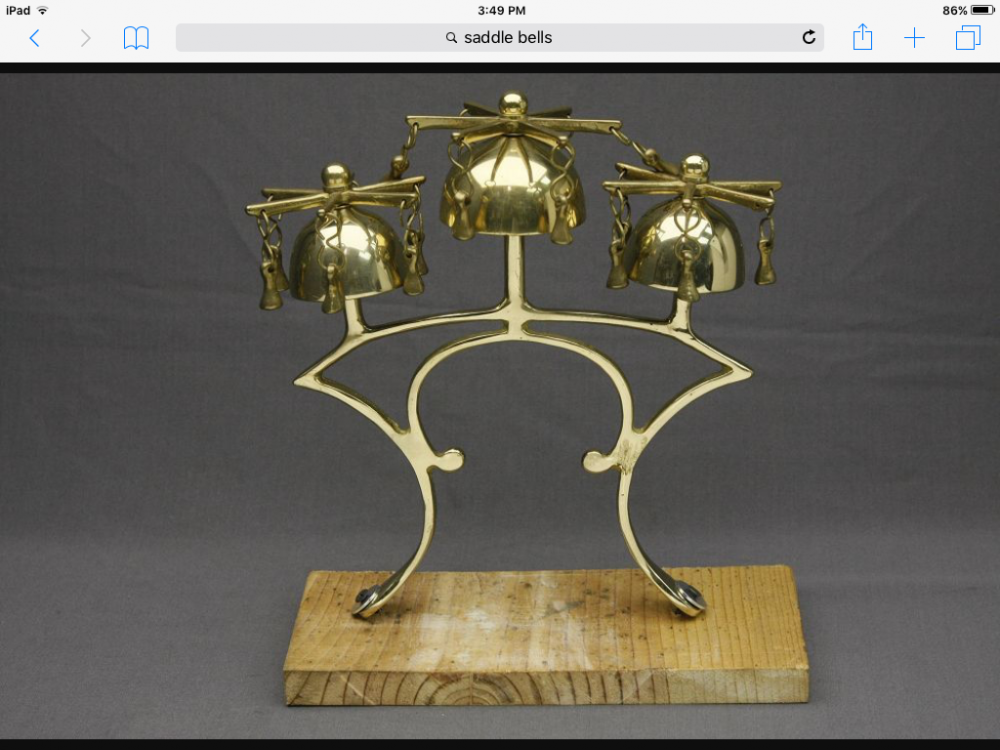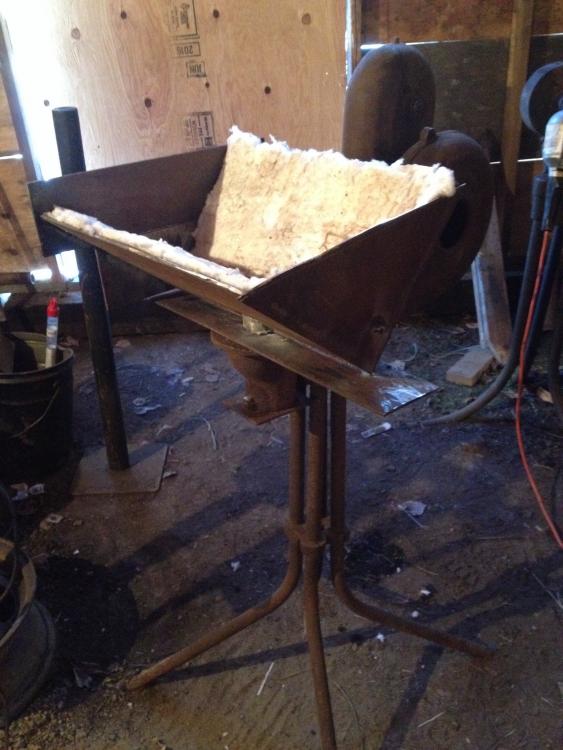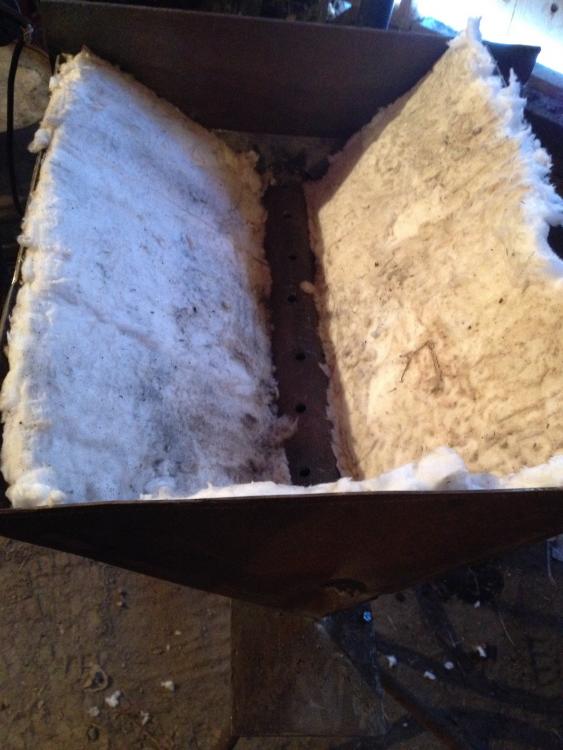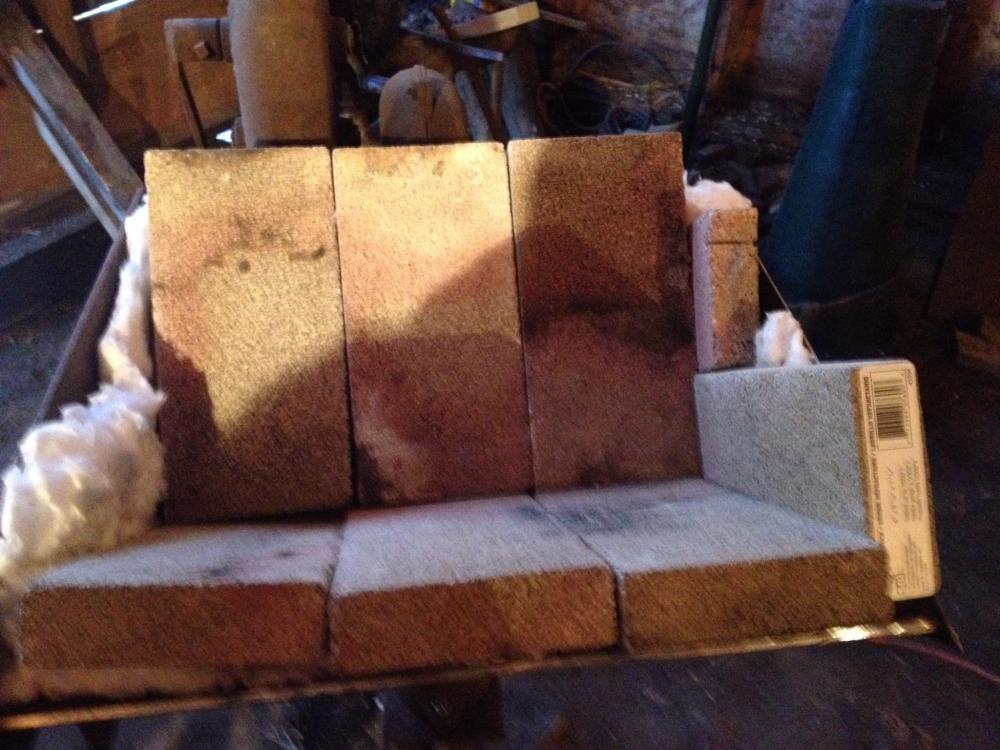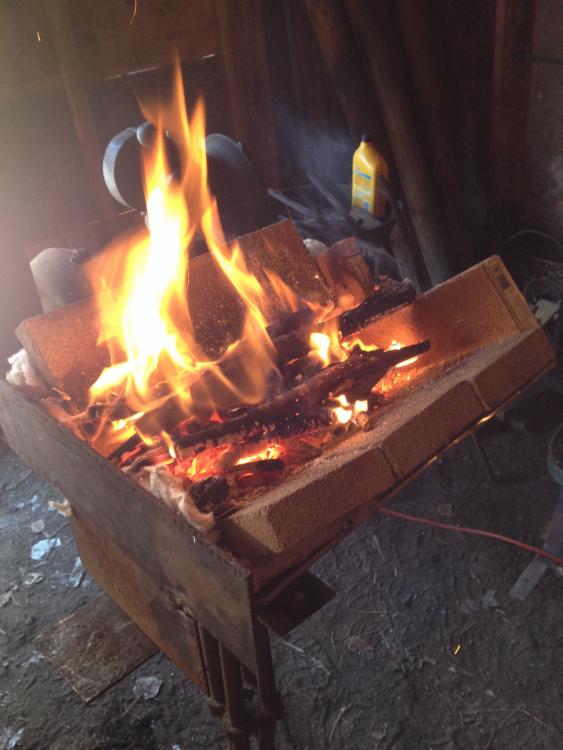
dimag
Members-
Posts
78 -
Joined
-
Last visited
Profile Information
-
Gender
Not Telling
-
Location
Fort Nelson B.C. Canada
Converted
-
Location
Fort Nelson B.C. Canada
-
Interests
Blacksmithing,music,and horses
-
Occupation
gasfitter,equipment operator.
Recent Profile Visitors
2,284 profile views
-
The spade shaped part is flat and thin, under 1/8”.
-
Anybody have an idea what this might be? A friend of mine in France owns it and she asked if I could identify it.
-
Well I lit a fire today , I used a 1" nipple long enough to get about 1/3 of the way down the trench. I am sold on the side blast system! It seems to make controlling the charcoal fire so much easier than a bottom blast. Man, you sure don't need much air either. I used some maple lump charcoal, store bought, lots of fleas. Is it water in the charcoal that causes those sparks? I am going to use the forge the way it is for now till I get used to managing the fire better. I do have a idea for a manifold. My thought is to run the pipe down the outside and tee it off three times. So there would be 3 1" tuyeres evenly spaced along the side. If they were threaded you could just cap or plug the ones you don't need. I still can't believe how little air you need to forge with this system!
-
Hmmm, it would seem I have not thought this through, as usual. Well, I guess I could run 1" pipe the full length of the box and drill holes in it, or, drill holes in the "air box". I could also just go back to the drawing board.
-
I did build a Whitlox style forge for wood but I really did not like it. I make a lot of garden shepard's hooks of varying lengths and my thought was to get the length so I could bend the hook in one heat. The propane forge is just too small, it gets the job done but it take 2-3 heats. That is the main reason for the trench style. My other thought was that welding small stuff would be easier in this configuration. My forge welding skills are poor and I figured it would be better if I could pile the fuel up in a constricted area it might help. I will try this before I weld it up and see what happens. Most of the wood I have access to is aspen ,balsam poplar, spruce , pine and birch. So there shouldn't be a big accumulation of ash under the tuyere.
-
I have a coal forge but at $85 cad plus tax for a 70# bag it doesn't get used much. I also have a propane forge which gets used the most but the last quote I got to fill my 100# tank was $105 CAD plus tax. However ,I have a copious amount of wood on my property , so one can see why I am entertaining the use of charcoal and I am cheap.The firebrick I have is 1" so I thought the blanket ( which was free) would be needed. I have enclosed a photo or two of the mock up any ideas or criticism is very welcome.
-
I don't mean to hijack this thread but since we are talking about side blast charcoal forges.. I am building a trench style forge mounted on an old Canada Forge blower. It is configured to be a side blast and the fuel will be exclusively charcoal. It will be lined with firebricks backed by dura blanket. My question is; what is the minimum distance the tuyere can be off of the bottom?
-
A friend of mine had a set of saddle bells, he never used them , they sat in his living room. His had a single clapper mounted inside the bell. They rang clear in comparison to jingle bells (crotal bells) and were a little louder. Having said that, he also had a set of rump bells made of brass but of the crotal type and they also rang clear. He used those ones and even when he got out of the business he sold most everything but he wouldn't part with those bells.
-
My body bells (medium draft) and a hip drop. A screen shot of saddle/ Russian bells sometimes called chimes.
-
Saddle bells and Russian bells are essentially the same thing, usually a bracket with three brass bells that is attached to the back pad of the harness. Sleigh bells or jingle bells are technically not bells, they are rattles. They are used in many different ways, some are mounted on the shafts or pole, some on belts around the horses neck or around the middle of the horse attached to the back pad and draped over the shafts. Some are hip drops that buckle to the breaching and hang on the horses butt. Some are attached to the sleigh. The brass bells of both jingle and saddle bells are often tuned, the sheet metal jingle bells are usually not tuned. The bells were used as horns basically, warning pedestrians and other drivers that there was a sleigh coming. A horse drawn sleigh , especially after a snowfall , runs very quietly. There was/is a belief that the bells would ward off evil spirits and protect you on your travels. The earliest known usage of bells on horses ( both saddle and harness horses) was around 800 BC. The bells were often an expression of wealth or status .
-
Well, here is the rough, and I mean rough, prototype of my wood forge. Already I have to change a bunch of things but I couldn't resist firing it up. So far fire management is looking to be a major learning curve. The logic of a side blast is coming into focus too. This bottom blast but that could easily change now that I have a better idea for making it from the side without compromising the original design of the blower configuration.
-
Well, if I go with the side blast into a v shaped firebox , I think that would mean that the metal being forged would have to be placed over top of the tuyere. Is that a problem?
-
Frosty, do you think a 1" pipe necked down to 3/4 at the tuyere would work for the side blast? I just happen to have a bunch of those sizes in both pipe and fittings. I believe there are some schedule 80 3/4" nipples around here someplace that might extend the life of the tuyere that will be in the fire. This all new to me , I have been primarily a gas guy with some coal experience but never used charcoal or wood.
-
Hey Neil, it has been a long time. This forge had a pan more than a pot. Sfduck has a couple of photos in his gallery of one he restored. I think it would have been considered a portable forge. The original pan may have been 20" across and may have come in various depths. Getting coal here is too expensive and propane is getting up there too, not to mention the tank recertification fees, so I am going to go to wood since I have copious amounts of it. The wood I have is mostly aspen and willow with some birch so we will have to see how it works out. The last Caniron I went to was the one on the island. I had good time there. I'll try to make Cloverdale.
-
I was given a Canadian blower & forge forge, or at least what is left of it. It was defineltly rode hard and put up wet. The fire pot and tuyere is completely gone, and the handle also. I managed to get it freed up today and surprisingly it still blows air very well. It is model # 210. I got thinking ( I know, a dangerous thing) that I might build a wood burning forge in the Whitlox style that I could bolt on to the unit without compromising the integrity of the blower and stand. My first idea was a pipe tuyere with a tee that would be fed air from the middle instead of the end and it would be welded to a piece of plate that could be bolted to the blower outlet, then build the sides etc. The second thought was to make it a side blast tuyere. I would have to bring the pipe from the bottom of the air outlet , which is a ash and clinker trap sort of thing, and up to the forge. Would a side blast work in a V shaped wood burning forge or should I stick with the bottom blast configuration?
